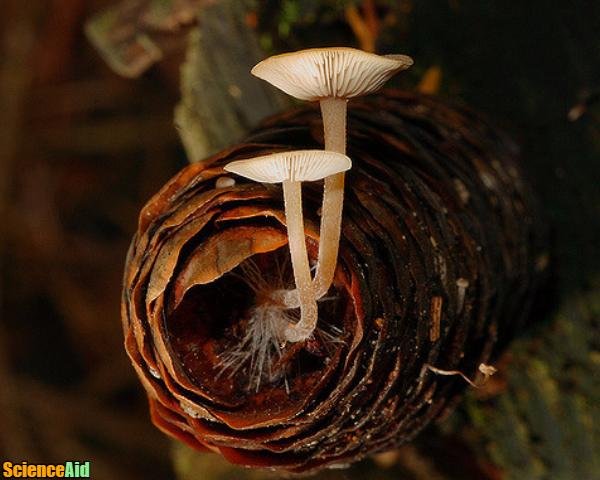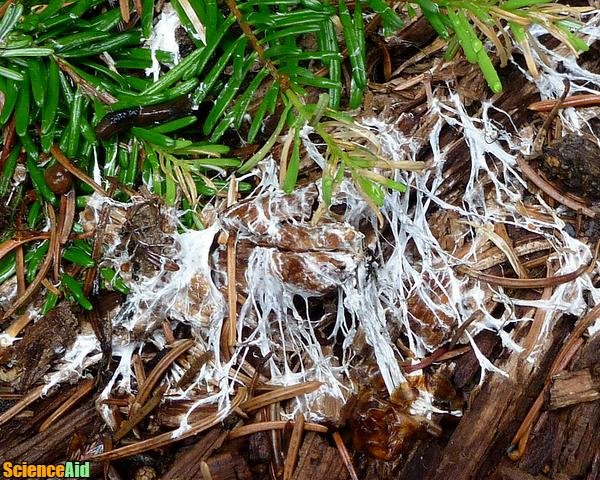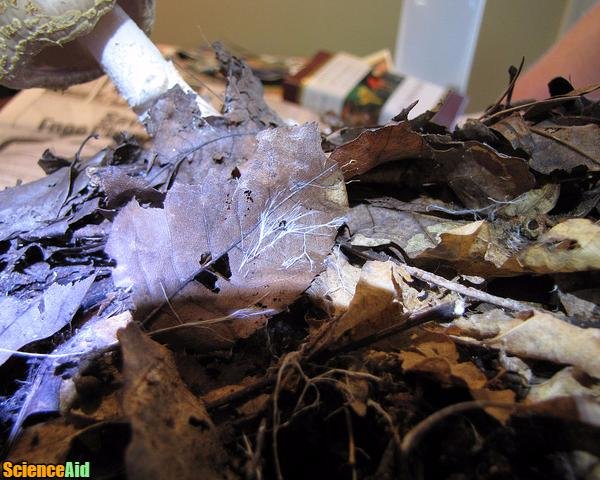Mycelia: Fungi's Underground Infrastructure
Edited by Kylieeleanne, Sharingknowledge, Jamie (ScienceAid Editor), SmartyPants
Mycelium
Most everyone knows what fungi look like, they are the mushrooms growing on logs in the forest, and the fuzzy spots that appear on week old bread; even tomatoes and other veggies eventually succumb to fungi. Most people recognize fungi but, few people know that what they see when they look at a mushroom, is just the fruiting body. Beyond the fruiting body, most often times underground, there is an incredibly intricate infrastructure called Mycelium. This mycelium provides the fruiting body with nourishment, it helps plants growing around it to flourish, it is one of the biggest contributors to the decomposition of organic matter, and they are the next frontier when it comes to environmentally friendly materials and packaging. Mycelium is a part of the everyday life and death cycles happening all around us.
- 1
- 2
- 3
- 4
- 5These networks of mycelia can be so incredibly small that they are undetectable by the human eye or, they can span for miles.
- 6A site in eastern Oregon once had a massive growth of mycelium that spanned 970 hectares, it was estimated that the growth which spanned 1,665 football fields was roughly 2,200 years old.
- 7When mycelium grows to such massive proportions, it is most times referred to as a mycelial mat but is sometimes referred to as Sclerotia.
- 8The mycelia's ability to expand into such an unbelievably large mass is due in part to its rigid cell structure, which allows it to move and grow through soil or other environments that require extra protection.
- 9The hundreds of hyphae which make up a mycelium are crucial to a fungi's ability to absorb nutrients from its environment, they work like long arms that reach out searching for water and other nutrients.
- 10The absorption of nutrients is a two stage process, first, the hyphae secrete an enzyme onto the food source which breaks down its biological polymers into smaller, more manageable units such as monomers.
- 11The second part of the process is the absorption of the monomers by facilitated diffusion and active transport.
- 12The secretion of enzymes by the mycelia is not only beneficial to the fungi, it plays a huge role in the decomposition of organic plant material, which is vital in both terrestrial and aquatic ecosystems.
- 13This means that fungi have the potential to eradicate such pollutants from their environment by utilizing them as food unless the chemical proves toxic to the fungi.Since the fungi decompose organic matter, it looks at typical organic based soil contaminants such as petroleum products and certain pesticides (which are both built on a carbon structure) as prime carbon sources.
- 14This method of filtration has been coined' myco-filtration. This biological degradation is a process known as bioremediation.Mycelial mats have even been suggested as having the potential to be used as biofilters, to remove microorganisms and chemicals from soil and water.
- 15Myco-filtration is just one of the many enviro-positive applications that mycelia can be used for, the observed relationship between Mycorrhizal fungi and plants could lead to technology improving farmers crop yields.
- 16It could also be spread onto logging roads, to hold new soil in place preventing washouts until newly transplanted woody plants can gain their roots.
- 17Another cool scientific find is Ectomycorrhizal extrametrical mycelia and Arbuscular mycorrhizal fungi can actually greatly increase the efficiency of water and nutrient absorption of most plants.
- 18The number of companies producing such packaging could one day be in the thousands, but they are nothing new; Since 2007 a company called 'Ecovative Design' has been growing mycelium in agricultural waste, to produce alternatives to polystyrene and plastic.Although not everyone is familiar with mycelia, scientific advancements in the field of study surrounding them can lead to significant leaps in the manufacturing of more environmentally friendly packaging, that everyone uses.
- 19Depending on the type of mycelia used these materials can vary greatly in durability.The agricultural waste along with the mycelia is placed into a mold and left for 3-5 days to grow itself into a durable material.
- 20They can even produce materials that are dielectric, water absorbent or, flame retardant.
- 21Like a mycelial mat, certain strains can produce masses that often resemble a ball. These masses are actually considered a delicacy in France, Spain, and several other countries, they are most often referred to as a truffle.Mycelium also has its own special spot in the food world.
- 22The term "Mycelia" though, like "fungi" is preferred as the plural."Mycelium" like "fungus" can be considered a mass noun, meaning the word can either be singular or plural.
Referencing this Article
If you need to reference this article in your work, you can copy-paste the following depending on your required format:
APA (American Psychological Association)
Mycelia: Fungi's Underground Infrastructure. (2017). In ScienceAid. Retrieved Apr 20, 2024, from https://scienceaid.net/Mycelia_Fungis_Underground_Infrastructure
MLA (Modern Language Association) "Mycelia: Fungi's Underground Infrastructure." ScienceAid, scienceaid.net/Mycelia_Fungis_Underground_Infrastructure Accessed 20 Apr 2024.
Chicago / Turabian ScienceAid.net. "Mycelia: Fungi's Underground Infrastructure." Accessed Apr 20, 2024. https://scienceaid.net/Mycelia_Fungis_Underground_Infrastructure.
If you have problems with any of the steps in this article, please ask a question for more help, or post in the comments section below.
Comments
Article Info
Recent edits by: Jamie (ScienceAid Editor), Sharingknowledge, Kylieeleanne







